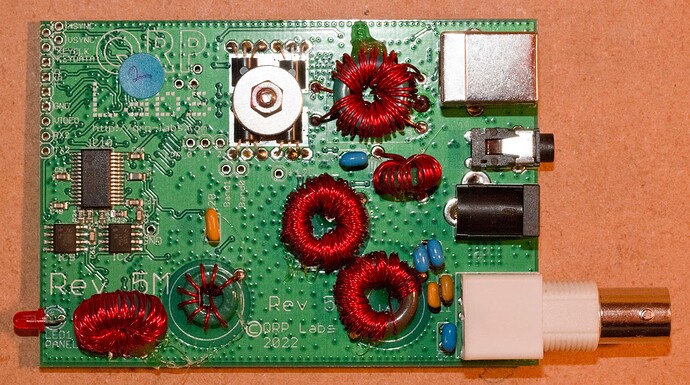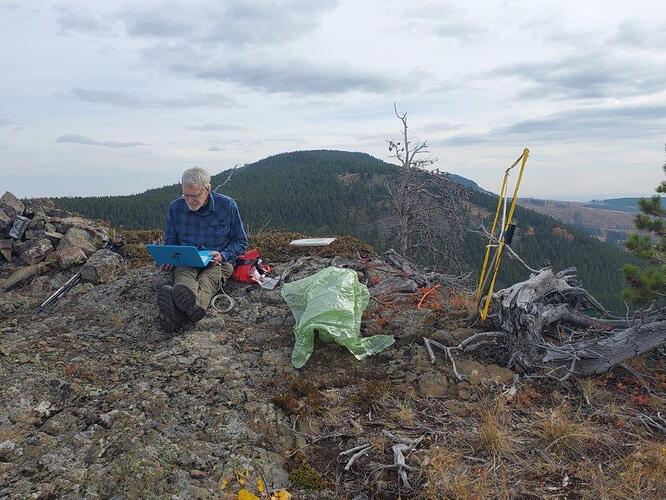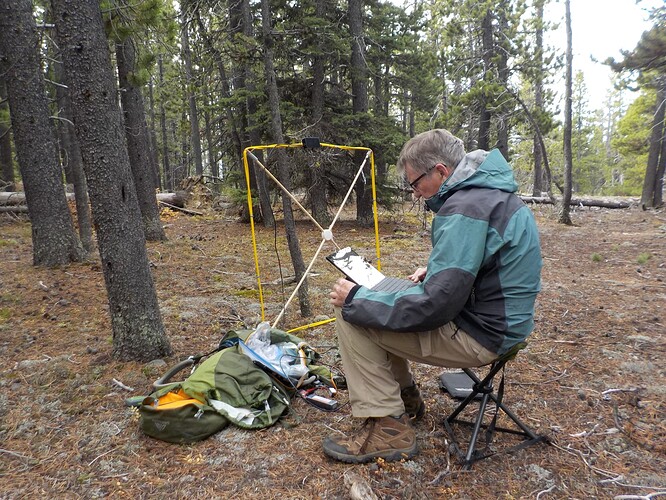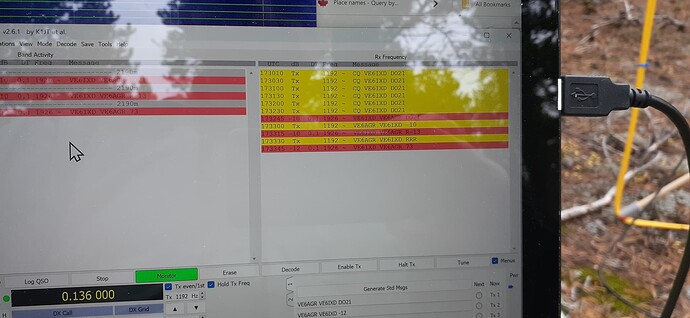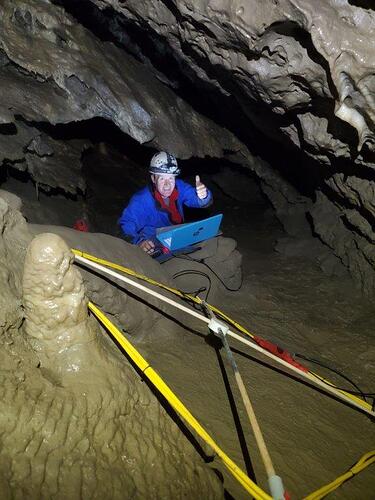On 2023 09 25 Ken, VE6AGR and Rich, VE6LCE climbed to the summit of Lusk N2 (VE6/JF-085) and Ian, VE6IXD ascended Stony Peak (VE6/JF-084). The two summits are only 1.4 Km apart and it was our intention to make a S2S contact using 136 KHz, the 2200m band. Yes, indeed the two summits are less than one wavelength apart at this frequency!
The equipment we were using had been constructed by VE6IXD as part of a project to update cave-to-surface communications. Contacts through the rock require low frequencies to reduce the losses in the conductive earth. However the range of the contacts is rarely more than a kilometer and so it is possible to use a magnetic loop antenna and to operate in the near field of the antenna.
The radio transceivers we used were modified QDX-M radios that were purchased in kit form from QRP Labs. QDX-M monoband 5W Digi transceiver At this time, (mid 2023) the mono-band kit radio was available only for 3 bands, 10, 11 and 12m. Fortunately the frequency sensitive components were all through-the-hole components, and no changes were needed to the surface mount circuitry or to the device firmware. After much winding of wire on various toroids, QDX-M devices working in the 2200m band were successfully implemented.
Image 1 QDX-M modified for operation at 2200m.
The antenna design followed conventional cave radio practise. A wire loop made of 2 turns of extension power cable (a total of 6 turns of 1.3mm dia wire (16AWG)) was supported on a rigid, but collapsible frame 1 m square. This loop was then tuned with 630V polystyrene caps to 137.5 KHz and a 50 Ohm connection to the radio was matched into a 1-turn tap with a pot-core transformer. The antenna can be taken apart and carried in a kitbag.
Image 2 Rich VE6LCE operating the station on the summit of Lusk N2, with Stony Peak in the background.
Image 3 Ian VE6IXD operating the station on the summit of Stony Peak
The QDX-M is a digital only device, and the software of choice for our S2S trip was WSJT-X running FT8. Previous tests using WSPR in the suburbs of Calgary, then later on a quiet rural road, suggested the potential range of our system would be close to 4 Km. Our S2S attempts using FT8 were successful!
Image 4, FT8 contacts on 0.136 MHz between hill tops 1.4 Km apart.
Future work is planned to enable keyboard-to-keyboard text communication. We will be testing JS8Call using laptops, and eventually Olivia using AndFLmsg using Android smartphones as the terminal devices.
